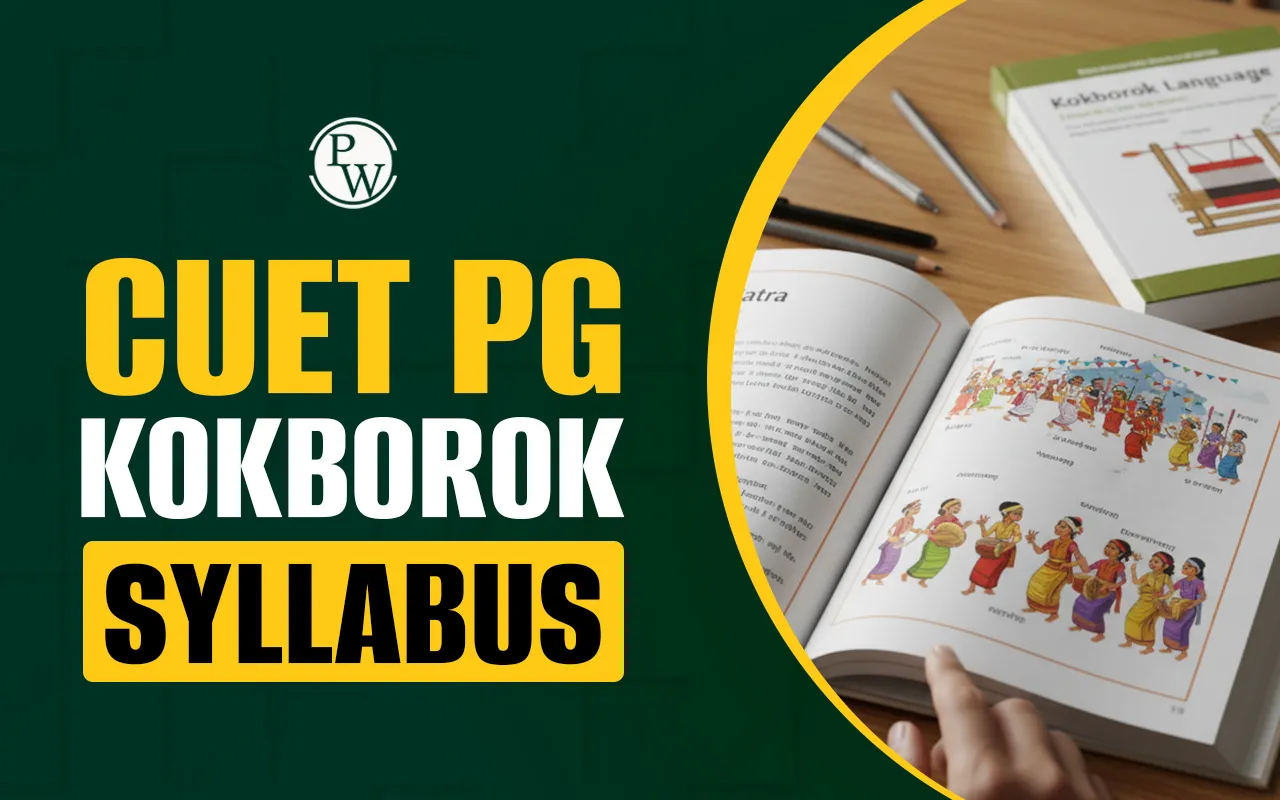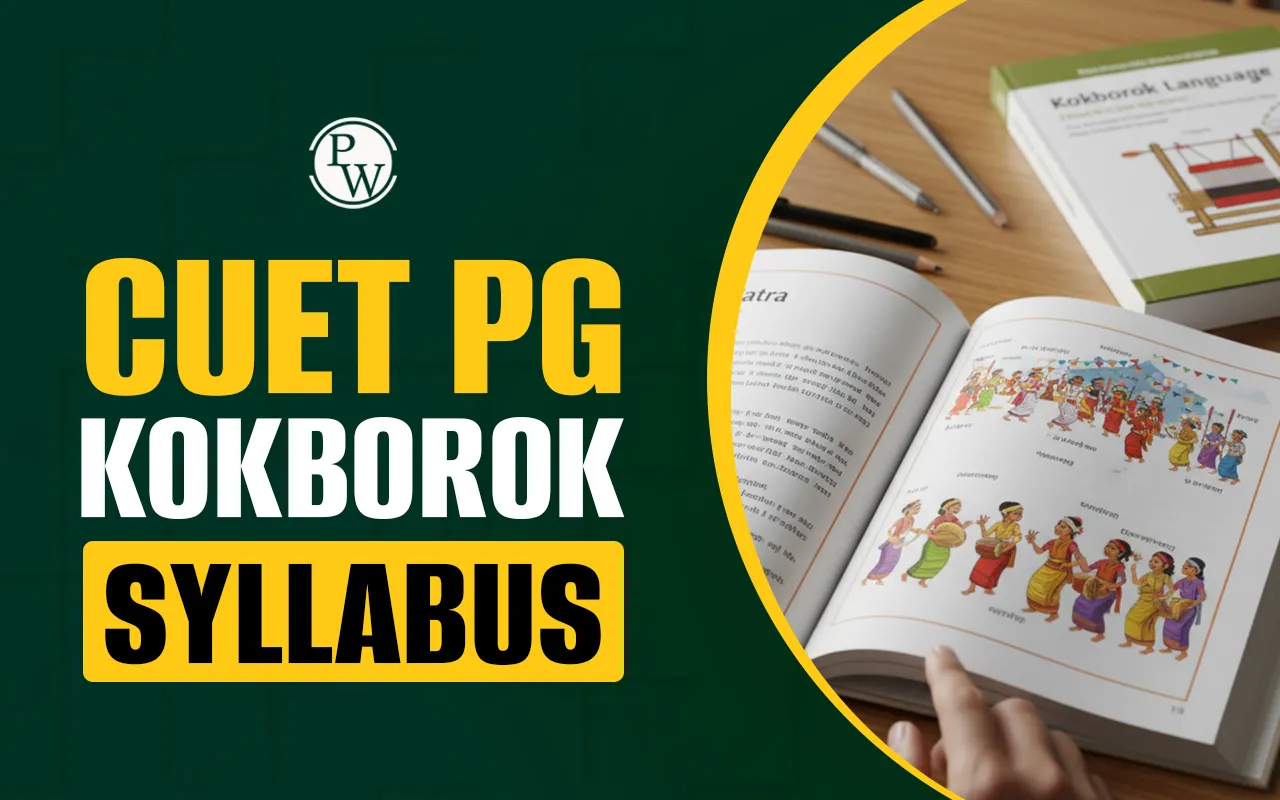

CUET PG Kokborok Syllabus 2026 is an important resource for candidates who are aspiring to pursue postgraduate programs. This syllabus is designed to asses proficiency in the Kokborok language. The Common University Entrance Test for Postgraduate (CUET PG) acts as the medium for admission to different PG courses provided by Central and participating universities in India. Having an understanding of the CUET PG Kokborok Syllabus for the 2026 is the first step for preparation in the examination.
The National Testing Agency (NTA) has defined the CUET PG Kokborok paper under the code LAQP19. This paper is set in order to check the knowledge of candidate related to the Kokborok language and literature. The focus is completely on Knowledge specific to the subject. Here we provide the complete, factually accurate syllabus, the CUET PG Kokborok Marking Scheme, and the details for your preparation.
CUET PG Kokborok Syllabus Overview 2026
CUET PG Syllabus for the Kokborok paper (LAQP19) follows the common structure for most papers specific to the domain. The exam is conducted in the Computer-Based Test (CBT) mode and focuses completely on the subject material. The important features of the CUET PG Kokborok Exam Pattern are as follows:
| CUET PG Kokborok Syllabus Overview 2026 | |
| Particulars | Details |
| Exam Name | CUET PG (Common University Entrance Test for Postgraduate) |
| Conducting Body | National Testing Agency (NTA) |
| Exam Code | LAQP19 |
| Exam Mode | Online (Computer-Based Test/CBT) |
| Total Questions | 75 Multiple Choice Questions (MCQs) |
| Total Marks | 300 |
| Duration | 90 Minutes (1 hour 30 minutes) |
| Syllabus Coverage |
The paper includes 10 major units focusing on: • History of Kokborok Language and Literature • Grammar and Translation • Poetry and Drama • Novel and Short Story • Folklore and Literary Essays • Comparative Studies on Bodo-Garo Languages • Genetic Classification and Language Families of India |
| Sections | One Section related to Knowledge specifci to domain |
| Medium of Exam | Kokborok |
CUET PG Kokborok Syllabus PDF Download
Candidates can download the official CUET PG Kokborok Syllabus PDF from the NTA website or follow the syllabus details provided here. Having the syllabus in a downloadable format is important for those who want to make structured plans for studying and tracking topics. Here is the direct link to download CUET PG Kokborok syllabus:
Detailed CUET PG Kokborok Syllabus 2026 (LAQP19)
The CUET PG Kokborok Syllabus consists of 10 major units covering the history, grammar, and literature of the language. All 75 questions in the exam are based on the topics listed below. Aspirants of CUET PG Kokborok are advised to cover all these units completely to ensure proper preparation.
| Unit-Wise CUET PG Kokborok Syllabus | ||
| Unit No. | Major Unit (Left) | Specific Topics/Sub-Units (Right) |
| 1 | History of Kokborok Language and Literature | Linguistic History: Origin and evolution of the Kokborok language (Bodo-Garo Group of Tibeto-Burman family). Literary History: Development stages (Old, Middle, Modern) and the contribution of Christian missionaries. Evolution of the script (Bengali/Roman), literary organizations, and prominent literary figures. |
| 2 | Kokborok Grammar and Translation | Grammar: Phonology (vowels, consonants, tones), Morphology (word formation, affixes), Syntax (sentence structure, word order). Applied: Idioms, phrases, proverbs, correction of errors, and translation (Kokborok to English/Bengali and vice-versa). |
| 3 | Poetry (Chini Bisingo Rwichwng) | Ancient & Modern Poetry: Study of prescribed poets and their major works. Analysis of poetic forms, meter, style, themes (nature, love, social reform), and literary movements in Kokborok poetry. |
| 4 | Short Story (Chini Kwrwi Twiyok) | Forms & Techniques: Study of the evolution of the short story genre. Analysis of elements like plot, characterization, setting, dialogue, and narrative technique in prescribed short stories. |
| 5 | Drama (Phaili Wngkhol) | Plays & Playwrights: Detailed study of prescribed full-length and one-act plays. Themes include social issues, historical events, and cultural identity. Analysis of dramatic structure and dialogue. |
| 6 | Novel (Naising) | Major Works & Themes: Study of prescribed novels and their authors. Analysis of narrative structure, character development, and socio-cultural themes reflected in the novels. |
| 7 | Literary Essays (Simong Kothoma) | Prose Forms: Study of different forms of prose, including essays, biographies, and literary criticism. Understanding the style, argument structure, and critical perspective of prominent essayists. |
| 8 | Folklore and Oral Tradition | Genres: Classification and study of various forms of oral literature, including folk tales (Maltijokma), proverbs, riddles, folk songs, and legends. Significance in preserving culture and history. |
| 9 | Genetic Classification and Language Families of India | Linguistic Classification: Overview of major language families of India (Indo-Aryan, Dravidian, Austro-Asiatic, Tibeto-Burman). Detailed placement of Kokborok within the Tibeto-Burman family. |
| 10 | Comparative Studies on Bodo-Garo Languages | Comparative Linguistics: A comparative study of the structural and lexical similarities and differences between Kokborok and other major languages of the Bodo-Garo sub-group (e.g., Bodo, Garo, Dimasa, Rabha). |
CUET PG Kokborok Marking Scheme
CUET PG 2026 examination includes negative marking. It is an important detail for all candidates to note while attempting the paper. The CUET PG Kokborok Marking Scheme is important in all subject papers.
| CUET PG Kokborok Marking Scheme | |
| Response Type | Marks Awarded |
| Correct Answer | +4 Marks |
| Incorrect Answer | -1 Mark (Negative Marking) |
| Unanswered/Unattempted | 0 Marks |
How to Prepare for CUET PG Kokborok Exam?
For effective preparation for the CUET PG 2026 Kokborok paper, candidates need a systematic approach to preparation. Along with this, proper subject knowledge with strategic skills to attempt questions in exam are important. Here are some pointers candidates need to keep in mind while preparing the exam: .
-
Master the Syllabus: Candidates need to start by covering all 10 units of the official CUET PG Kokborok Syllabus. One should focus on literary movements, prominent authors, and grammatical rules.
-
Understand the Exam Format: The paper is specific to the domain, with 75 questions to be answered in 90 minutes. Time management is important. Once should practice answering questions quickly and accurately.
-
Practice with Mock Tests: Utilise mock tests that strictly follow the prescribed pattern to get familiar with the CBT mode and improve your speed and accuracy.
-
Strategic Guessing: The CUET PG Kokborok Marking Scheme involves a -1 deduction for incorrect answers. Candidates should avoid blind guessing. One should only attempt questions where they can eliminate at least one or two options.
